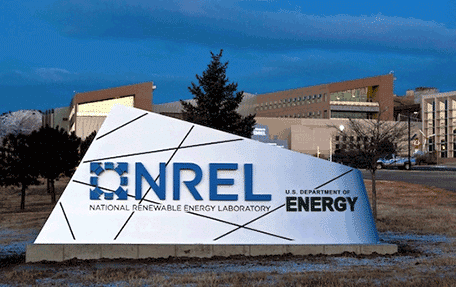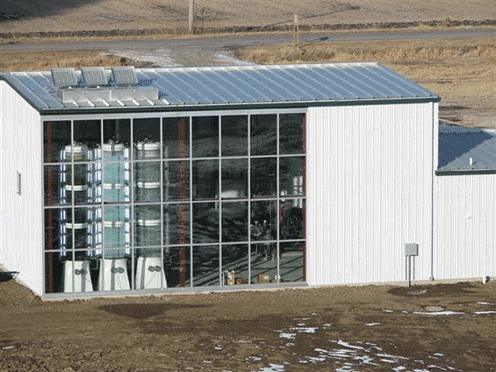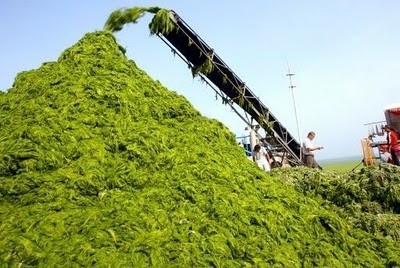
Let’s face it, microalgae oil and biofuels are sexy.
These days it has panache, glitz, it is a celebrity of biofuels. If you say you’re in “microalgae oil” people want to listen. You’re a part of the “in” crowd of biofuels. With good reason…

The US National Renewable Energy Laboratory released a formal research paper on the theoretical maximum oil yields for microalgae in various climates. For the southwestern US states (Phoenix, AZ), they claim 38,000 gallons/acre/year is possible with a flat ground solution.
- There are now 4 micro algae firms that are in production generating 14,000gallons/acre/year at about $2/gallon based on a petroleum refinery business model. Calculating at only 10,000 gallons/acre/year and producing enough transportation fuel to provide 100% of the fuel used by the US in 2009 (converting to the higher energy density of biodiesel) results in less than 12 million acres of land.
- Corn for ethanol is currently using 27 million acres of prime US farmland generating about 300 gallons/acre/year and biodiesel from soy was until recently, using over 20 million acres of farmland at 50 gallons/acre/year.
Granted, those findings sound unrealistic to me. (Very unrealistic) but they are talking about the 'theoretical maximum' of what is possible. They aren't talking about current production. Which is to say, if that is even 10th. true, we currently haven't even scratched the surface of what we can achieve in microalgae oil.
Which is why it is ironic to find an microalgae oil pioneer tucked away in a far corner of unassuming Iowa.

BioProcess Algae project, co-located at the Green Plains Renewable Energy plant in Shenandoah, Iowa in the far southwest of the state.
The company is now in the process of upgrading to a 5-acre demonstration algae micro farm of its modular technology – which is expected to be the final step before active commercialization at Shenandoah and other sites.
There are 4 things worth noting about this project.
- First, it’s confirmed that they’ll utilize localized carbon dioxide from local businesses, in this instance an ethanol factory to create microalgae oil.
- Second, it’s verified (at pilot size) its exclusive growth content can function – which is a significant advancement, since the organization is growing micro algae from fluid, utilizing a biofilm, massively lowering the quantity of water that has to be transferred so as to grow algae.
- Third, Green Plains continues to promote the venture. Along with the “a penny really matters” arena of corn ethanol, GPRE is well-known to have a persistent concentration on viability and profitability – and they’ve been insistent that this BioProcess Algae project isn’t a science project – but a concentrated investigation of value-add prospects with regard to their ethanol fleet – understanding that if the project demonstrates that it isn’t achieving GPRE’s difficult success standards, it can be closed down. Well, it’s not closed down.
- Fourth, one more noteworthy element is its hybrid model – a semi-closed process, utilizing some components of greenhouse design in order to safeguard and heat the microalgae, but while also using some of the better, low-cost elements of raceway-style, open pond design. That provides a price framework along with a process that works well in the temperate climates where staple grains generally grow – means that you can place the plant beside the CO2 supply and easily share systems.
The proof is in the performance.
The company is already taking orders. In June, BioProcess Algae and KD-Pharma Bexbach announced that they have entered a commercial supply agreement for the production of EPA-rich Omega-3 oils for use in concentrated EPA products for nutritional and/or pharmaceutical applications. Under the agreement, BioProcess Algae will supply microalgae oil which will be refined by KD-Pharma’s proprietary Supercritical Fluid Technology to produce highly-concentrated vegetable sourced EPA oils.
The Question Isn’t: ‘Can you do it? It is: Can you do it economically?’

Howard Walker III of Westmont says he’s found a recipe to convert algae into what is essentially crude oil, like the petroleum pumped from wells.
“This is a direct result of using acidic mine discharge to grow the algae,” he said. “Anybody using (other) algae is not doing anything like this.”
U.S. Alternative Fuels at 432-438 Horner St. has worked on the creation of biodiesel from algae for around six years. The concept ended up being to utilize the technologies used to produce ethanol from corn oil and modify it to obtain fuel from algae oil. Similar work has actually been taking place since the 1970s all over the country.
They chose to concentrate on microalgae oil since it is expected the water-grown plant can generate 10,000 gallons of biofuel per acre of “crop.” Corn generates around 18 gallons an acre, he explained.
“It will alter how the petroleum industry operates. I have full confidence we can actually control how the process is done so we don’t have to worry about any major environmental disaster like the BP spill (in 2010 in the Gulf of Mexico) It isn’t: ‘Can you do it’” he said. “It is: ‘Can you do it economically?’
Walker is expecting the Johnstown factory will be in commercial use within a couple of years, without the need of outside funding. The small-scale factory presently running can generate around 51/2 gallons of fuel an hour from 30 gallons of algae.
He anticipates the price under $30 for a 42-gallon barrel.
Looking back over the years, in 2008 everyone was saying “Algae what?”
- In 2009, they were saying “It can’t be done.”
- In 2010, they were saying “It can’t be done on the same scale as petroleum.”
- In 2011, they were saying, “We’re at least 15 years away from commercial scale.”
- In 2012, they are saying “Yes, but can you do it economically?”
What are they going to say in 2016?
You also be interested in...

Algae Animal Feed
Most algae have a natural high protein content while a high oil content is mostly achieved though manipulation of cultivation conditions. Read More

Algae Bioplastics
“The day where we hit 95 dollars a barrel I think all of a sudden you’re going to see algae bio-plastics basically explode,” That day has come...Read More

Algae in Aquaculture
From fish farms to fish food, algae aquaculture is booming. With the rising price of fish food many aquaculturists are growing their own...Read More
The Algae Revolution Has Begun
I’m not a biodiesel expert, but I would say that in his book, Making Algae Biodiesel at Home, David Sieg provides more than enough information to tackle this process with confidence if you have the inclination to tackle a do-it-yourself project of this magnitude, which will require dedication, patience, and natural skill.
He provides concise overviews as well as in-depth resources for understanding the process and its variables, including tips from commercial versions and national labs. The guide covers all aspects required, including selecting, growing, harvesting the algae; and making the biodiesel. David skillfully makes it easy enough that it is within the grasp of doing this at home. His guide is well-organized and well-written, accompanied by abundant illustrations, photos, and diagrams.
New Energy Congress



